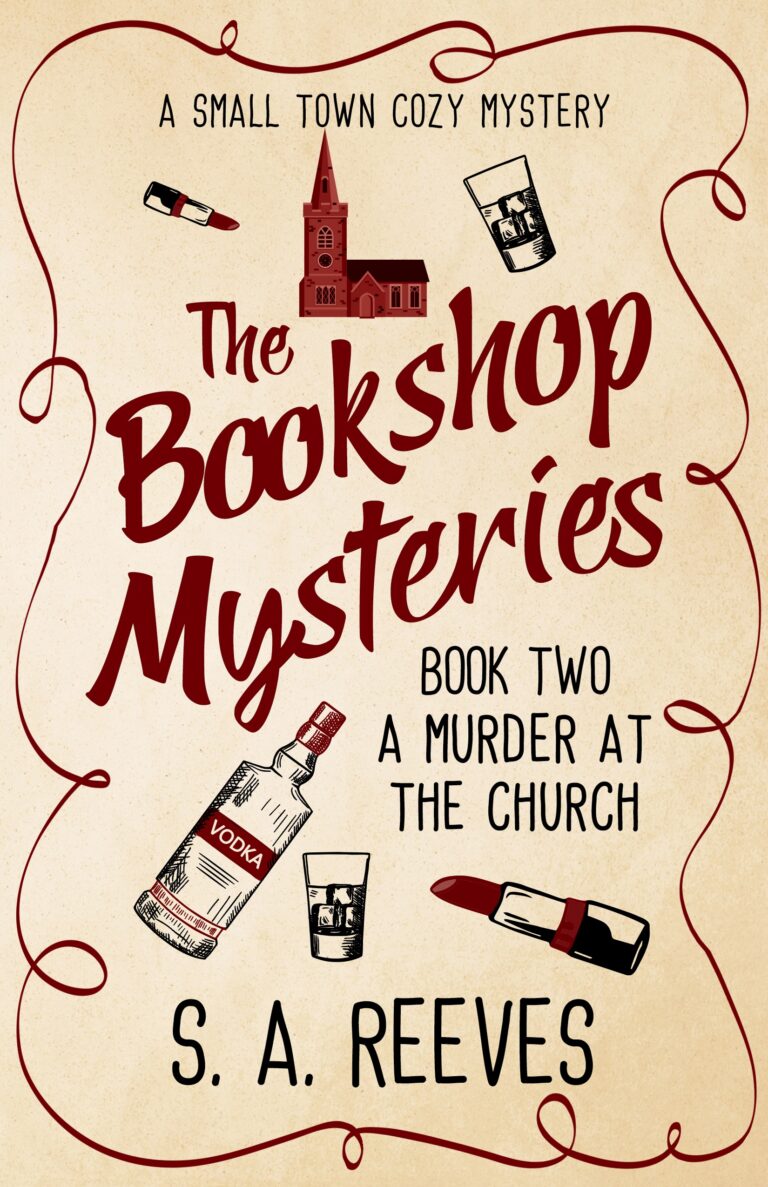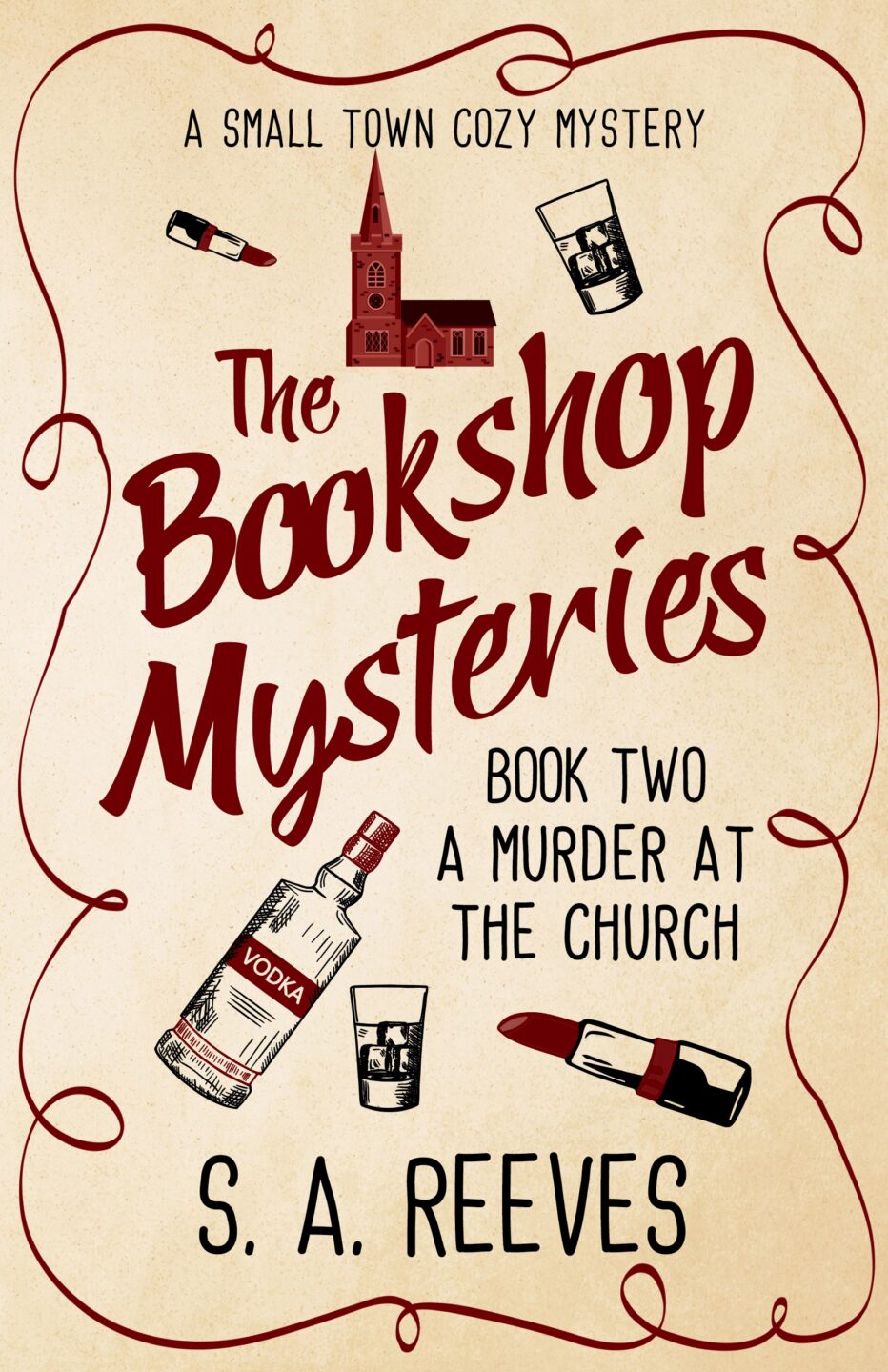Gemma and Mavis, the proprietors of the Bookworm Bookshop and Café, have enjoyed a measure of celebrity after solving the murder of a visiting author. When a murder victim is discovered in the tower of a church, it’s only natural that their curiosity is piqued—especially when a suspect is arrested whom both women doubt could be the perpetrator. Gemma and Mavis are soon out to satisfy their own curiosity, to clear an innocent man’s name, and to confront some of the darkness that lurks in their own little town of Belper.
The second in S.A. Reeves’s Bookshop Mysteries series (A Bitter Pill being the first), A MURDER AT THE CHURCH successfully expands its characters and world while sticking close to its predecessor’s strengths. Written as a love letter to both murder mysteries and their aficionados, these books clearly expect their readers to understand the conventions of the genre; they’re fast-paced, getting quickly into the meat of the action, and they effectively foreshadow the shape of the plot with well-placed clues. When Gemma stumbles upon a body and finds a lipstick tube, a broken bottle, and muddy footprints, the reader can easily see the tableau and begin to speculate on the shape of the investigation. A MURDER AT THE CHURCH also retains its quintessentially British sensibility, hewing to the small-town, BBC model of murder mystery. Everyone knows everyone, and a murder investigation has the same urgency as the local gardening competition. All of these elements act as metatextual winks to the reader, summed up in a meeting of the local mystery readers’ club at the Bookworm Bookshop. A MURDER AT THE CHURCH is happy to speak directly to the reader about the fun (and value) of cozy little murder stories such as itself.
A MURDER AT THE CHURCH is told in clear, effective prose that itself matches the brisk clip of the plot. Especially in the dialogue, the text retains its British tone, as when a hopeful suitor clings to the object of her affections “like ivy on an old brick wall.” The action and setting are rendered in descriptive language gently evoking theme, as when the tables of a chic bistro “[huddle] together like old friends sharing secrets.” Some extremely minor typos still need final resolution (this reviewer noted an unexpected cluster of apostrophe-s’s on plural nouns near the middle of the text), but they never obscure meaning and don’t ultimately detract from the pleasure of reading or the overall vision of the story.
A MURDER AT THE CHURCH is also an interesting turn from its predecessor in thematic complexity. Obviously, small-town murder mysteries thrive on the pent-up frustrations of small-town life, but the first book in the series was about the murder of a visitor. Here, the plot touches on much deeper issues, pertaining to the structure of a community: unhoused people, drug abuse, organized crime, and domestic violence. The rapid pace doesn’t fully serve issues as grave and complex as these. Nonetheless, that doesn’t diminish the effectiveness of the investigation narrative itself, and it breaks ground for future installments to explore those issues more deeply in investigations to come. A MURDER AT THE CHURCH still leaves readers satisfied and piqued for the next Bookshop Mystery.
With darker and more complex themes than its predecessor, S.A. Reeves’s THE BOOKSHOP MYSTERIES, BOOK TWO: A MURDER AT THE CHURCH still rides high on brisk pacing, clear structure, and the comfortable familiarity of small-town England.
~Dan Accardi for IndieReader


